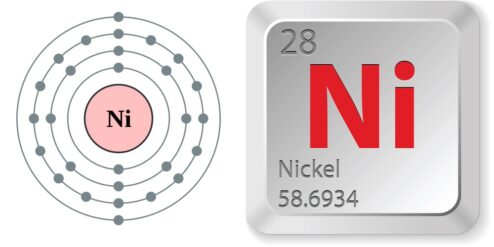Introduzione: Nickel is a naturally occurring element that is present in varying quantities in many foods. As a trace mineral, it plays a crucial role in the body’s metabolic processes. However, some individuals may have a sensitivity or allergy to nickel, leading to adverse reactions upon consumption. This article aims to explore the presence of nickel in peanut butter, its impact on health, and its place in a low-nickel diet.
Understanding the Nickel Content in Foods
Nickel is found in varying quantities in the earth’s crust and can enter the food chain through soil and water. As a result, all foods contain some amount of nickel. The level of nickel in foods can be influenced by various factors, including the nickel content of the soil in which they are grown, the water used for irrigation, and the cooking utensils used. Foods that are typically high in nickel include whole grains, nuts, dried fruits, and chocolate.
Peanut Butter: Composition and Nutritional Value
Peanut butter is a popular food product made from ground dry roasted peanuts. It is rich in protein, healthy fats, fiber, and various vitamins and minerals. Peanut butter is also a good source of antioxidants and is low in carbohydrates, making it a healthy choice for those following a low-carb diet. However, like other nuts and seeds, peanuts can contain a significant amount of nickel.
Tracing Nickel in Peanut Butter: An Analysis
The exact amount of nickel in peanut butter can vary depending on the type of peanuts used and the processing methods. However, studies have shown that peanuts, in general, contain a moderate to high amount of nickel. Therefore, it can be inferred that peanut butter, being a concentrated form of peanuts, would also contain a significant amount of nickel. However, more research is needed to determine the exact amount of nickel in different brands of peanut butter.
Impact of Nickel Consumption on Human Health
While nickel is a necessary trace mineral for the human body, excessive consumption can lead to nickel allergy or systemic nickel allergy syndrome (SNAS). Symptoms can include skin rashes, itching, redness, swelling, and in severe cases, systemic reactions like headache, nausea, and respiratory problems. Individuals with a known nickel allergy are advised to avoid foods high in nickel.
Managing Nickel Allergy: Role of Diet
Diet plays a crucial role in managing nickel allergy. Individuals with a nickel allergy are often advised to follow a low-nickel diet. This involves avoiding or limiting the consumption of high-nickel foods, including whole grains, nuts, seeds, and chocolate. It’s also recommended to cook with stainless steel utensils, as nickel can leach into food from nickel-plated utensils.
Peanut Butter in a Low-Nickel Diet: Is It Safe?
Given the potential high nickel content in peanut butter, individuals with a nickel allergy may need to limit their consumption or avoid it altogether. However, the tolerance to nickel can vary from person to person. Some people may be able to tolerate small amounts of peanut butter, while others may experience symptoms even with minimal exposure. It’s important to consult with a healthcare provider or a dietitian to determine the best dietary approach for managing nickel allergy.
Conclusioni: Nickel is a trace mineral that is present in all foods, including peanut butter. While it plays a crucial role in the body’s metabolic processes, excessive consumption can lead to nickel allergy. Individuals with a nickel allergy are often advised to follow a low-nickel diet, which may include limiting the consumption of peanut butter. However, individual tolerance to nickel can vary, and it’s important to consult with a healthcare provider to determine the best dietary approach.
Per approfondire:
- The Nickel Institute: Provides comprehensive information on nickel, including its presence in foods and its impact on health.
- The American Academy of Allergy, Asthma & Immunology: Offers resources on various allergies, including nickel allergy, and advice on managing them.
- The European Academy of Allergy and Clinical Immunology: Provides research and guidelines on allergies, including nickel allergy.
- The National Institutes of Health: Offers a wealth of information on various health topics, including dietary guidelines for managing allergies.
- The Journal of Clinical Nutrition: Contains research articles on various aspects of nutrition, including the impact of dietary nickel on health.


